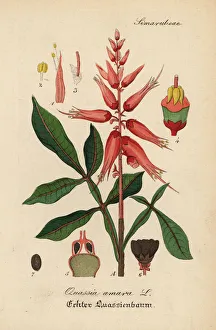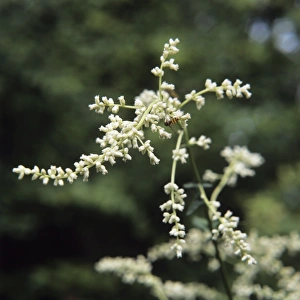Antimalarial Collection
"Antimalarial: A Bitter-Sweet Remedy for a Deadly Disease" In the world of medicine, few substances have had such a profound impact on combating malaria as antimalarials
All Professionally Made to Order for Quick Shipping
"Antimalarial: A Bitter-Sweet Remedy for a Deadly Disease" In the world of medicine, few substances have had such a profound impact on combating malaria as antimalarials. Derived from various sources, these potent remedies have saved countless lives throughout history. One such source is Amargo, also known as bitter-ash or bitter-wood (Quassia amara). This tropical plant has long been recognized for its medicinal properties and was used by indigenous tribes to treat fevers and digestive ailments. Little did they know that it contained compounds effective against the malaria parasite. Another remarkable discovery came in the late 19th century with the Quinine Tree (Cinchona Calisaya). Its bark yielded quinine, an essential compound in treating malaria. The beautiful chromolithograph from 1890 showcases this tree's significance in providing relief to those suffering from this devastating disease. During World War I, quinine proved invaluable in treating soldiers afflicted with malaria. Its advantages were evident - reducing fever and preventing relapses. Thanks to this wonder drug, many lives were spared amidst the chaos of war. As World War II raged on, efforts intensified to dispense malaria drugs efficiently among troops stationed in affected regions. Malaria drug dispensing stations became crucial hubs where soldiers received their life-saving doses of medication like clockwork. However, even with advancements in antimalarials came warnings about potential side effects during wartime conditions. Soldiers were cautioned about adverse reactions and instructed on proper usage to ensure maximum efficacy while minimizing risks. The cinchona officinalis illustration serves as a reminder of quinine's origin and its role as a powerful weapon against malaria. The intricate depiction captures both its botanical beauty and scientific importance simultaneously. Zooming into molecular structures reveals the complexity behind these antimalarial wonders – multiple representations of quinine molecules emphasize their pivotal role in disrupting the parasite's life cycle within human hosts. But the fight against malaria didn't stop there.









